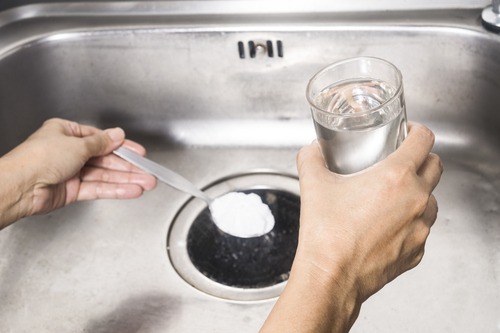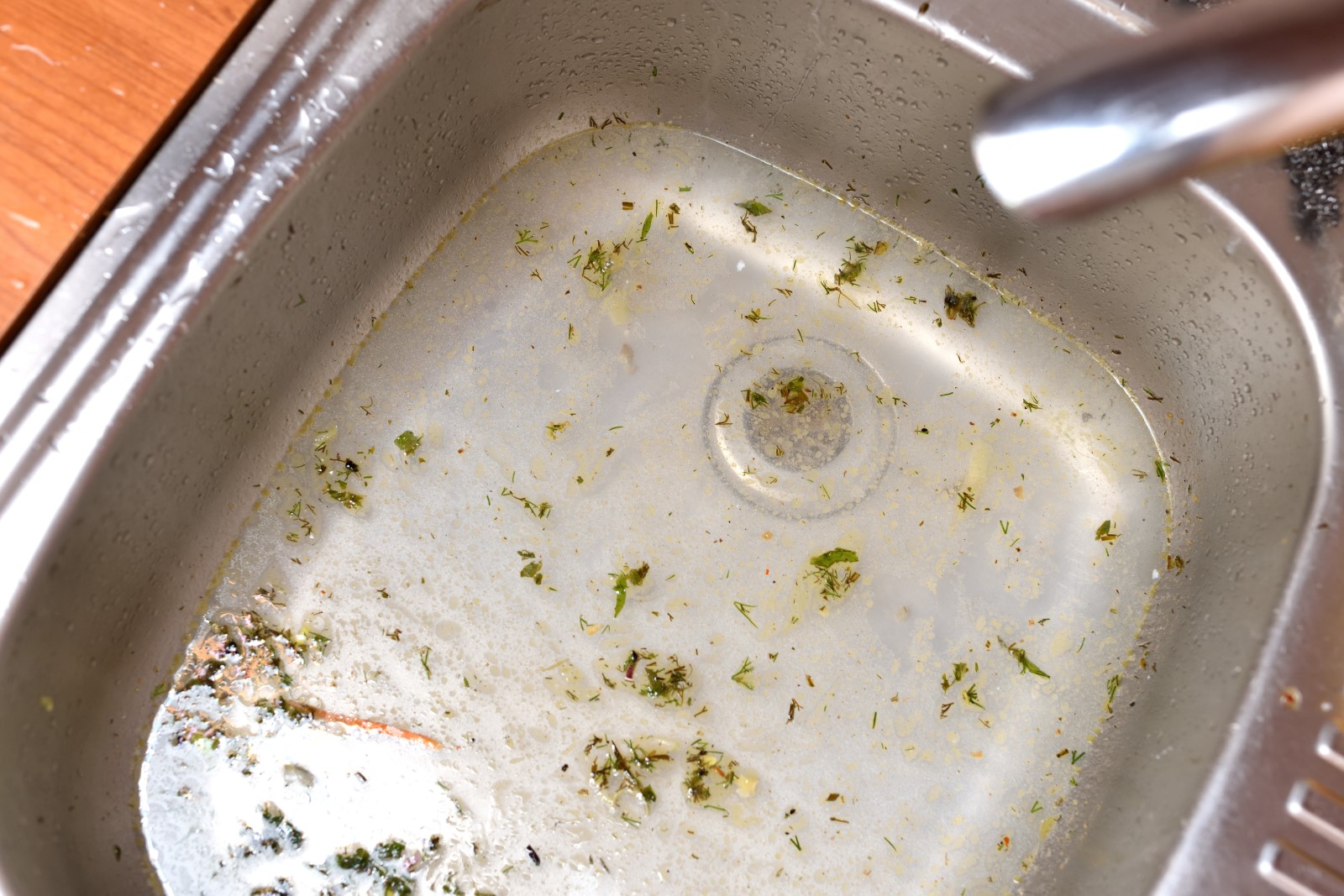Steps for Managing a Blocked Drain Prior to Consulting Professional Plumbers
Steps for Managing a Blocked Drain Prior to Consulting Professional Plumbers
Blog Article
Were you interested in info about Tips for Dealing with Clogged Drains and Sewer Lines?

Intro
Taking care of a blocked drain can be a frustrating experience, disrupting daily activities and potentially causing damages to your residential or commercial property. Nevertheless, prior to connecting to pipes professionals, there are steps you can require to resolve the issue on your own. In this guide, we'll explore DIY solutions and safety nets to deal with a blocked drain properly.
Determining the Concern
The primary step in addressing a blocked drainpipe is acknowledging the indications. Slow-moving water drainage, gurgling sounds, foul odors originating from drains pipes, or water backing up are common indicators of a blocked drainpipe. Recognizing these signs early can help protect against even more complications.
Selecting the Right Pipes Solution
When choosing a plumbing service, consider elements such as experience, licensing, and consumer evaluations. Choose a respectable plumbing professional with a performance history of high quality handiwork and transparent rates techniques.
Expense Factors to consider
The cost of specialist drain cleaning services can vary depending upon the extent of the clog and the plumbing professional's prices. Request quotes from several companies and inquire about any type of service charges to guarantee transparency and stay clear of surprises.
Safety and security Precautions
When trying DIY drainpipe cleaning, prioritize safety. Use protective handwear covers and eyeglasses to stay clear of contact with damaging chemicals or microorganisms. Never ever blend different drain cleaning items, as this can create dangerous fumes.
Case Studies
Real-life instances illustrate the effectiveness of do it yourself services and the value of prompt expert treatment in fixing drainpipe obstructions.
Common Sources Of Obstructed Drains
Recognizing the variables that contribute to drain blockages is necessary for reliable resolution. Common perpetrators include hair, soap scum, grease, food debris, and international objects like hygienic items or paper towels. Tree roots invading below ground pipes can also trigger significant clogs.
DIY Solutions
For small obstructions, numerous do it yourself solutions can be effective. Putting boiling thin down the drainpipe can help dissolve oil and debris. Sodium bicarbonate and vinegar or a mixture of salt and baking soda can serve as all-natural cleansers. Making use of a plunger or plumbing snake to dislodge obstructions is an additional alternative.
Tools and Tools
Having the right devices available can make DIY drainpipe cleaning a lot more reliable. A bettor is a flexible device for clearing clogs in sinks, commodes, and showers. A plumbing serpent or auger can reach much deeper blockages, while drainpipe cleansing chemicals can be utilized cautiously for persistent obstructions.
Safety nets
To stay clear of future clogs, embracing preventive measures is critical. Set up drainpipe guards or filters to catch hair and debris prior to they enter the pipelines. Consistently flush drains with warm water to liquify grease buildup, and stay clear of getting rid of grease or solid waste away.
When to Call a Professional
While do it yourself solutions can settle small clogs, certain indicators suggest the demand for professional help. Relentless obstructions, foul odors despite cleaning up initiatives, or several drains backing up at the same time are red flags that warrant skilled treatment.
Conclusion
By adhering to the pointers outlined in this overview, you can efficiently take on blocked drains and prevent future plumbing problems. Whether selecting do it yourself options or seeking expert support, timely action is crucial to maintaining a healthy and balanced plumbing system and protecting the stability of your home.
How to Clear a Clogged Drain Yourself (And When to Call In the Professionals)
What Can Clog a Drain
Dirt Skin flakes Hair Grease Soap scum Food Offset pipes Tree roots Small objects Mineral buildup DIY Tricks to Unclog a Drain
You can fix this! Once you have identified the source of the clog (or have a vague idea), you can try one or a combination of these fixes in order to clear your plumbing.
Wire Hanger or Snake
Untangle and clear out hair from a drainpipe with a homemade snake. Use a straightened-out wire hanger with a 90-degree angle hook to locate the clog and drag out any unwanted material.
Remember not to push the clog further down to where the wire hanger cannot reach! If you need to follow up with a plunger, give it a try. Your efforts might be more successful after it’s been wire-snaked.
If you want to get fancy and don’t have a wire hanger to spare, head to the store and pick up a hand-operated drain snake. You can get one for $10-$30. It may save you the hassle, and provide additional length to reach deep into the clogged pipe.
Plunger
A cup plunger has a suction cup attached to a wooden handle. The rubber creates a seal around the drain, and increases the pressure force of the plunger.
Plunge for 30-second increments to loosen the clog. This may need to be repeated over the course of 15-20 minutes. Once plunged, run the water to flush the remaining material out of the drain.
Remember– never use a plunger if you have used a chemical drain cleaner. These chemicals can splash up from the force of the plunger and cause serious injury or burns.
Boiling Water
Hot water can sometimes break up materials into a flushable amount. Dirt, grease, and soap buildup requires heat in order to unstick from surfaces.
Take your kitchen kettle and heat your water to a boil. Once it reaches a rolling boil, pour it directly down the drain into the blockage. Carefully follow with plunging, if necessary.
Don’t worry if this takes more than one try! It can often take multiple kettles and repeated plunging in order to clear a particularly stubborn clog.
Chemical Drain Cleaner
As a last resort, pick up a bottle of chemical drain cleaner. Drain-cleaning chemicals are potent, and not very good for the environment.
You may need to wear protective eyewear in gloves before handling your bottle of chemical drain cleaner. Follow the instructions printed on the bottle, and flush with water as soon as the instructions allow. Do not follow with plunging.
Baking Soda and Vinegar
As a safer alternative to chemical drain cleaner, baking soda and vinegar can create a chemical reaction that clears tough clogs.
Combine one cup of cleaning vinegar with one cup of boiling water, and set aside. Once you have done this, pour half a cup of baking soda down the drain. Give the baking thirty seconds to settle and cover a large portion of the problem drain.
Following the baking soda, pour down your vinegar and hot water solution. Once the vinegar and baking soda combine, the mixture will bubble and fix. Let this reaction fizzle in the drain for about an hour.
After an hour, follow with a kettle’s worth of hot water. The heat and liquid should flush out any remaining material.
When to Call a Plumber
If your DIY attempts haven’t cleared your clog drain, it’s time to call in a professional. It’s not worth losing access to your kitchen sink or high-traffic bathroom. A clog in a vital area can keep you from the things you’d rather be doing, and derail your routine.
Anytime a clog is causing water to spread is a time to call in a plumbing service. What starts out as a little bit of water can quickly grow into serious, expensive water damage.
Additionally, a serious clog can result in burst pipes or serious leaks. Make sure you know when to take it seriously!
https://myguysnow.com/how-to-clear-a-clogged-drain-yourself-and-when-to-call-in-the-professionals/

We were made aware of that article on 8 Tips For Clearing A Blocked Drain from a friend on a different web page. Please pause to share this write-up if you enjoyed it. I praise you for being here. Don't hesitate to check our website back soon.
Visit Page Report this page